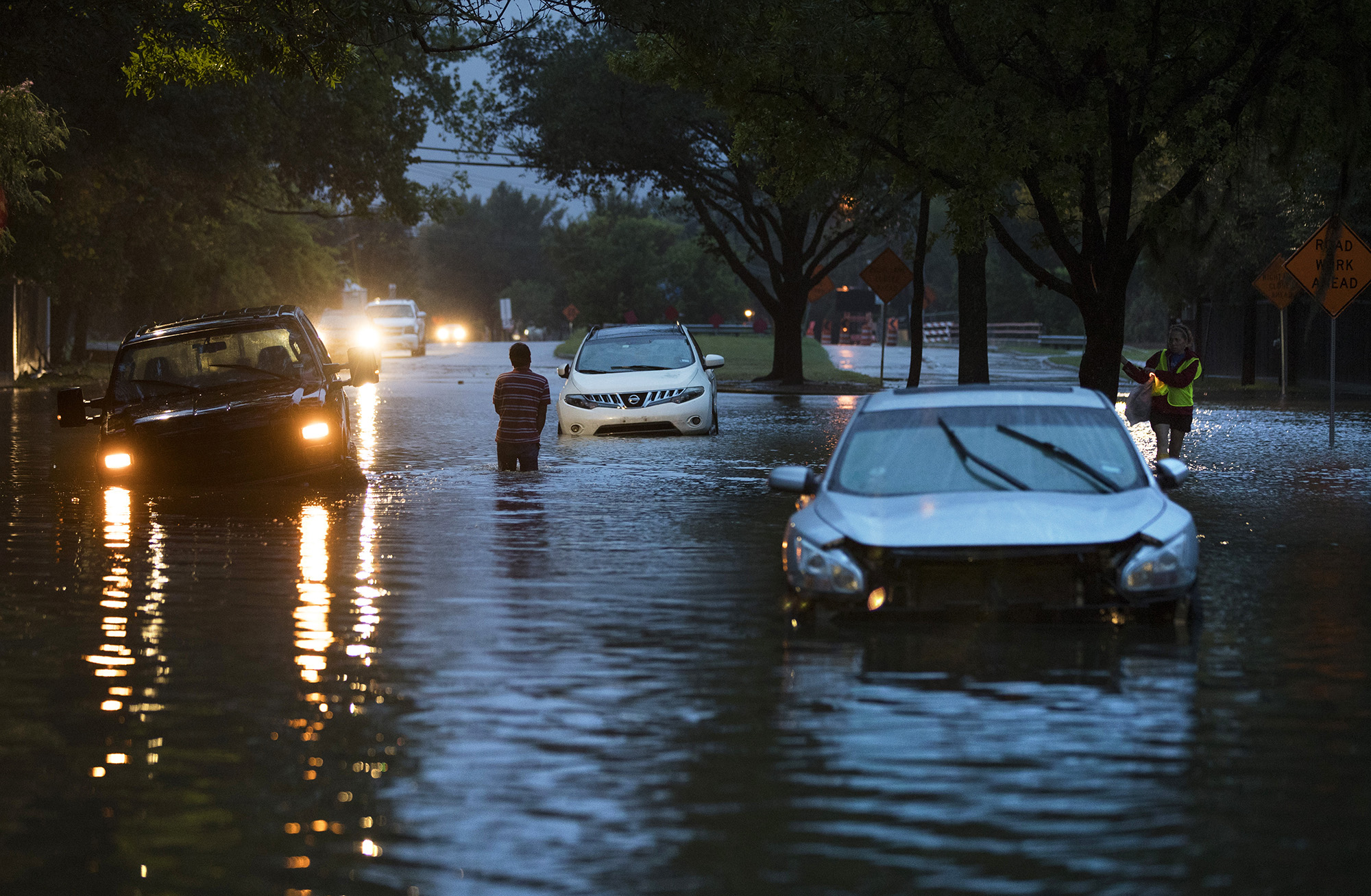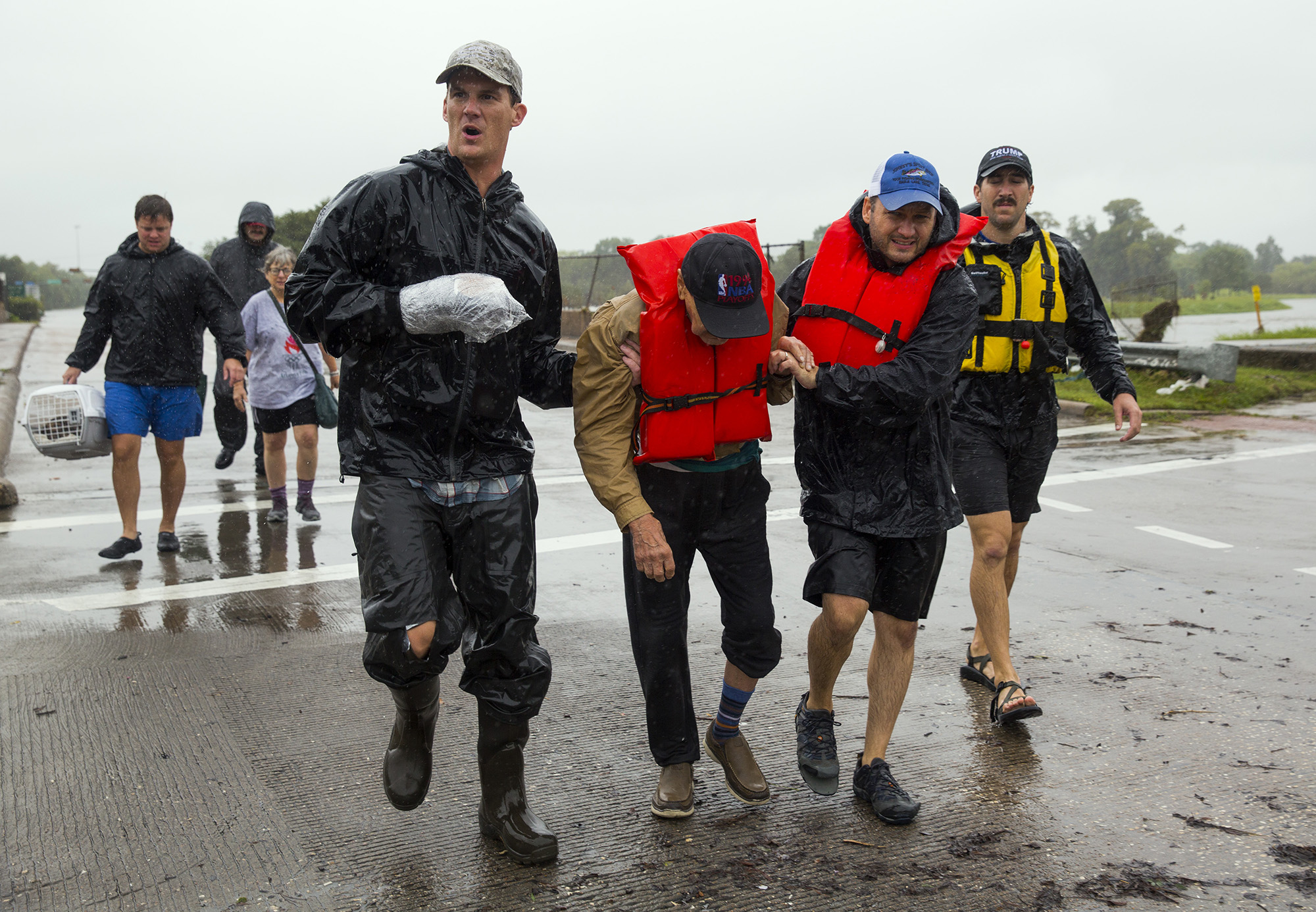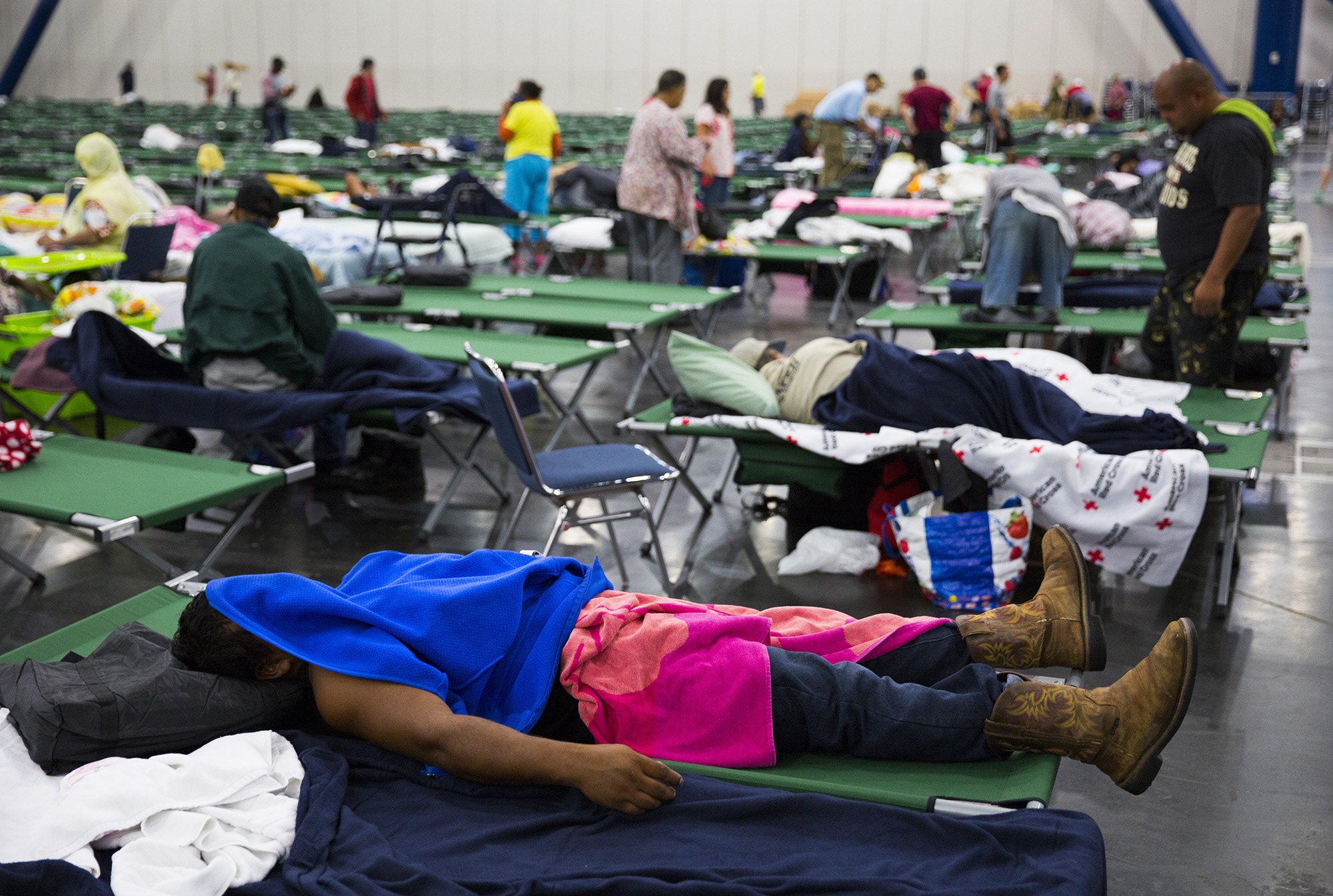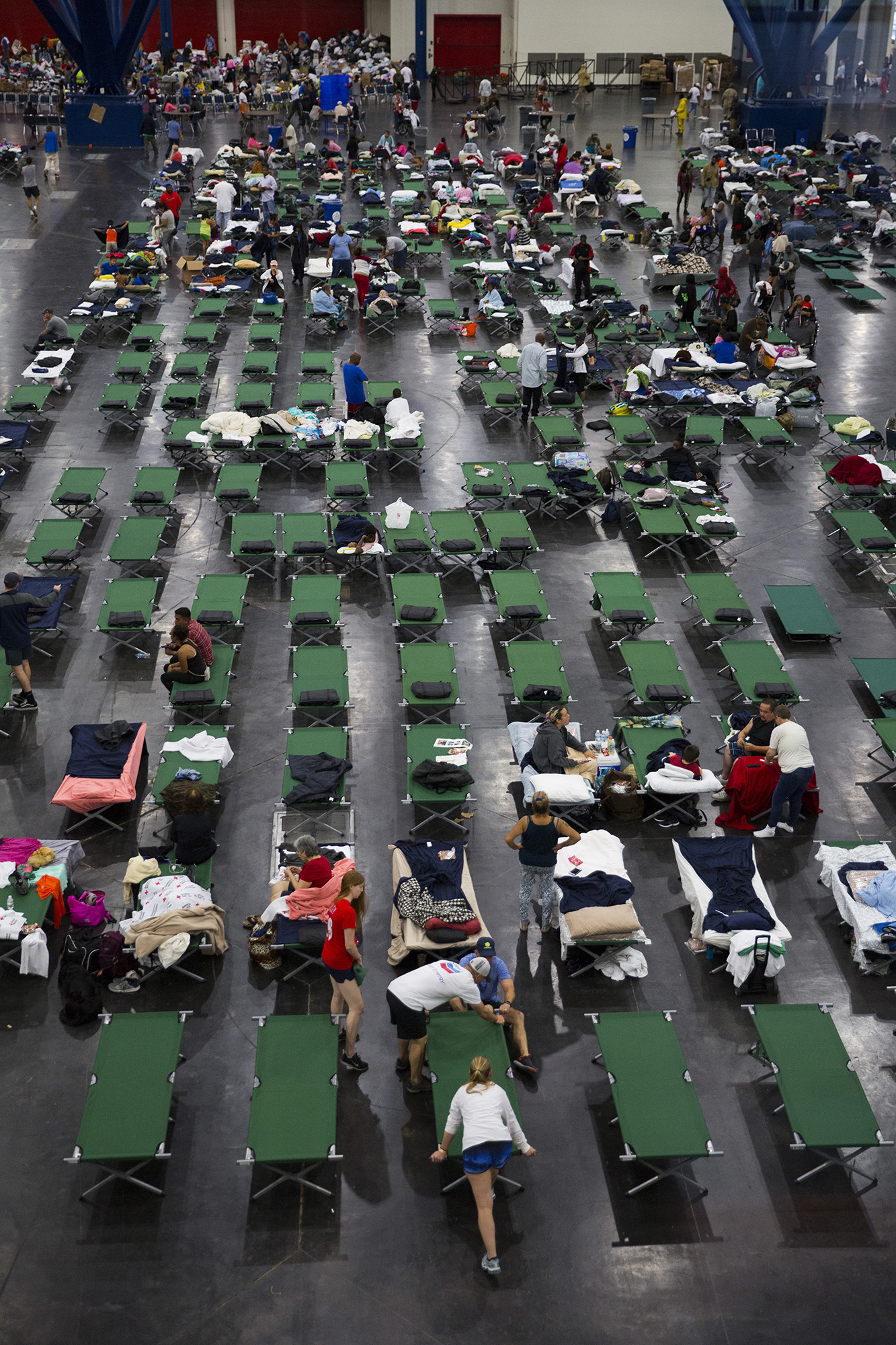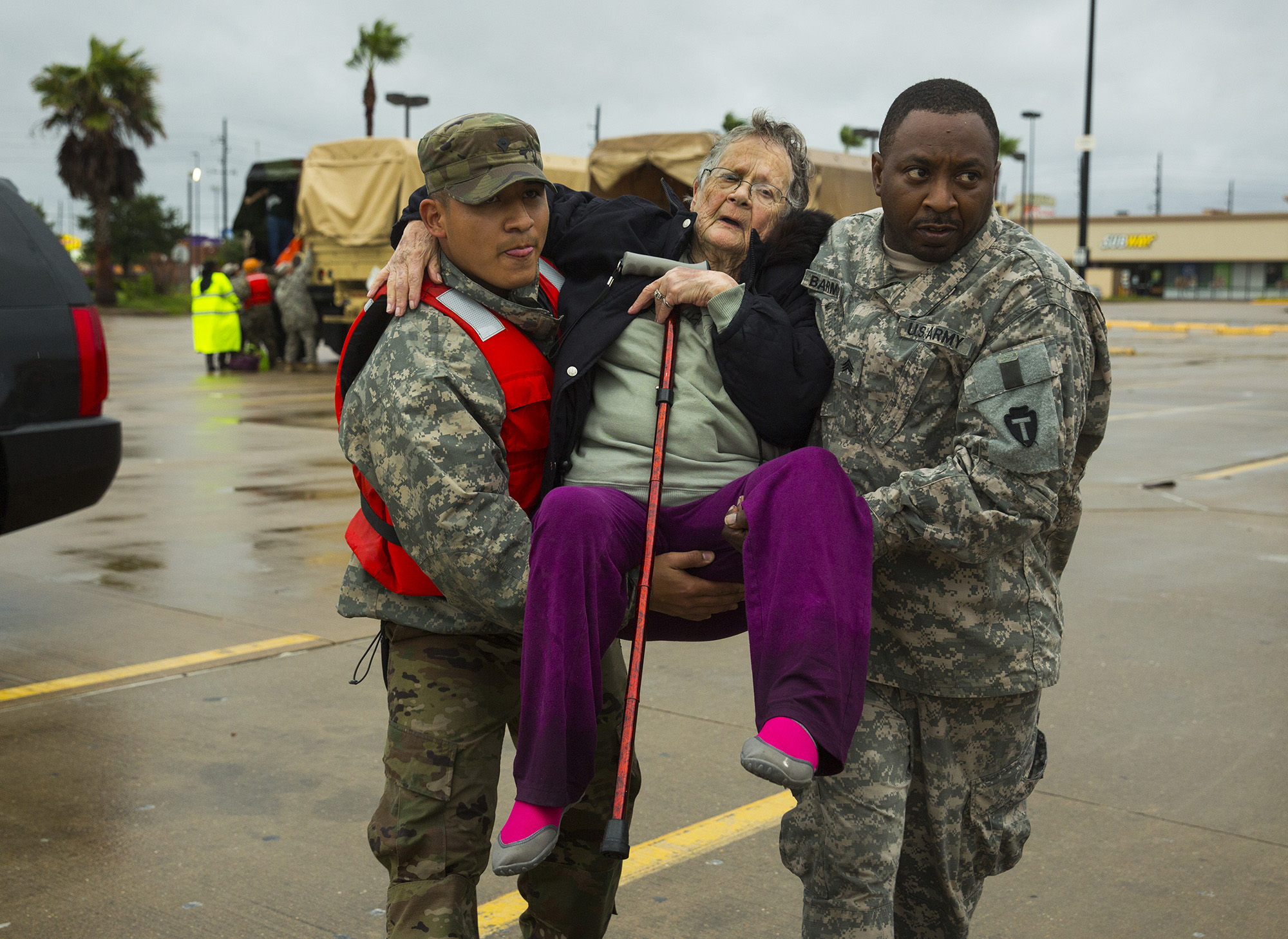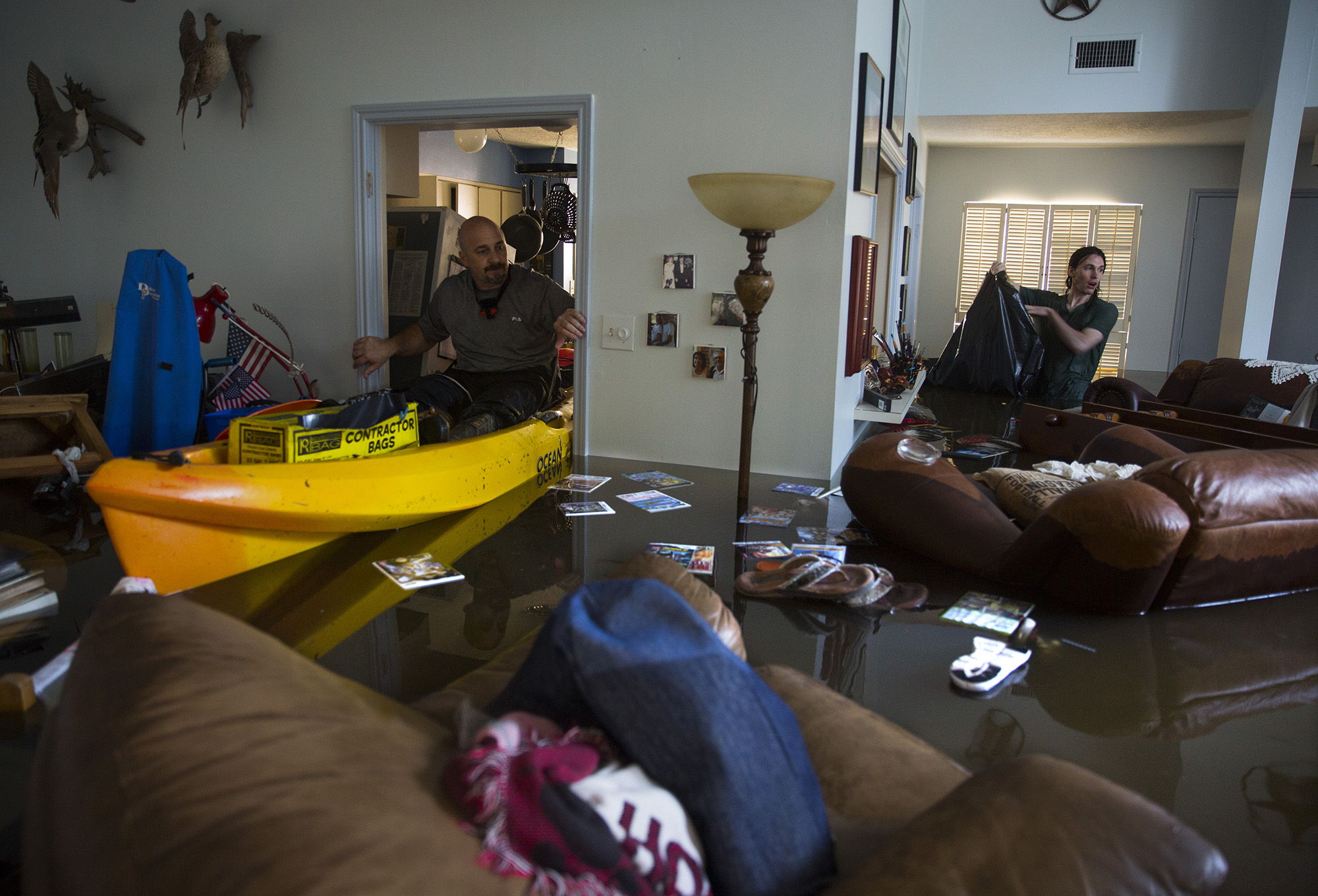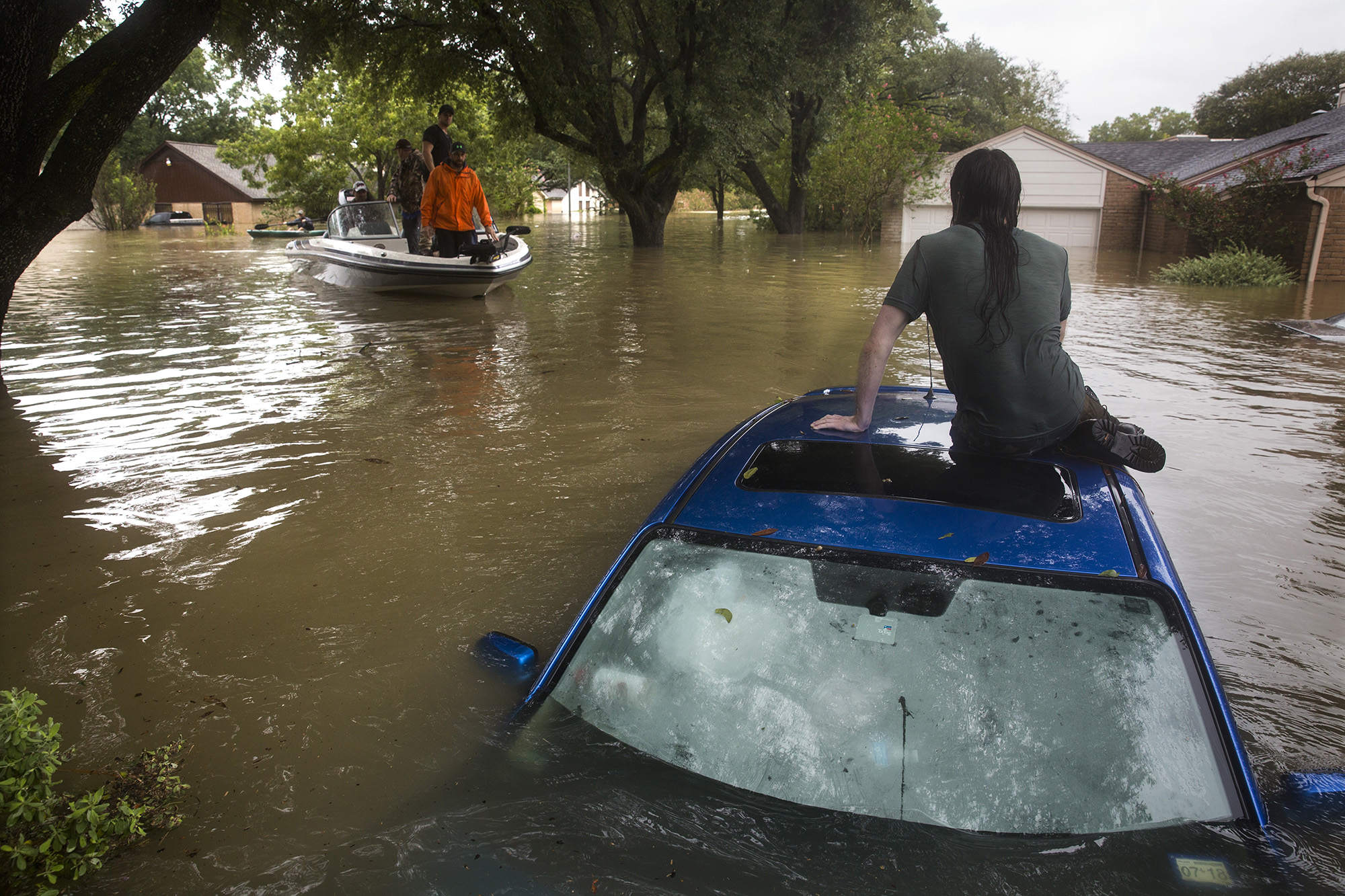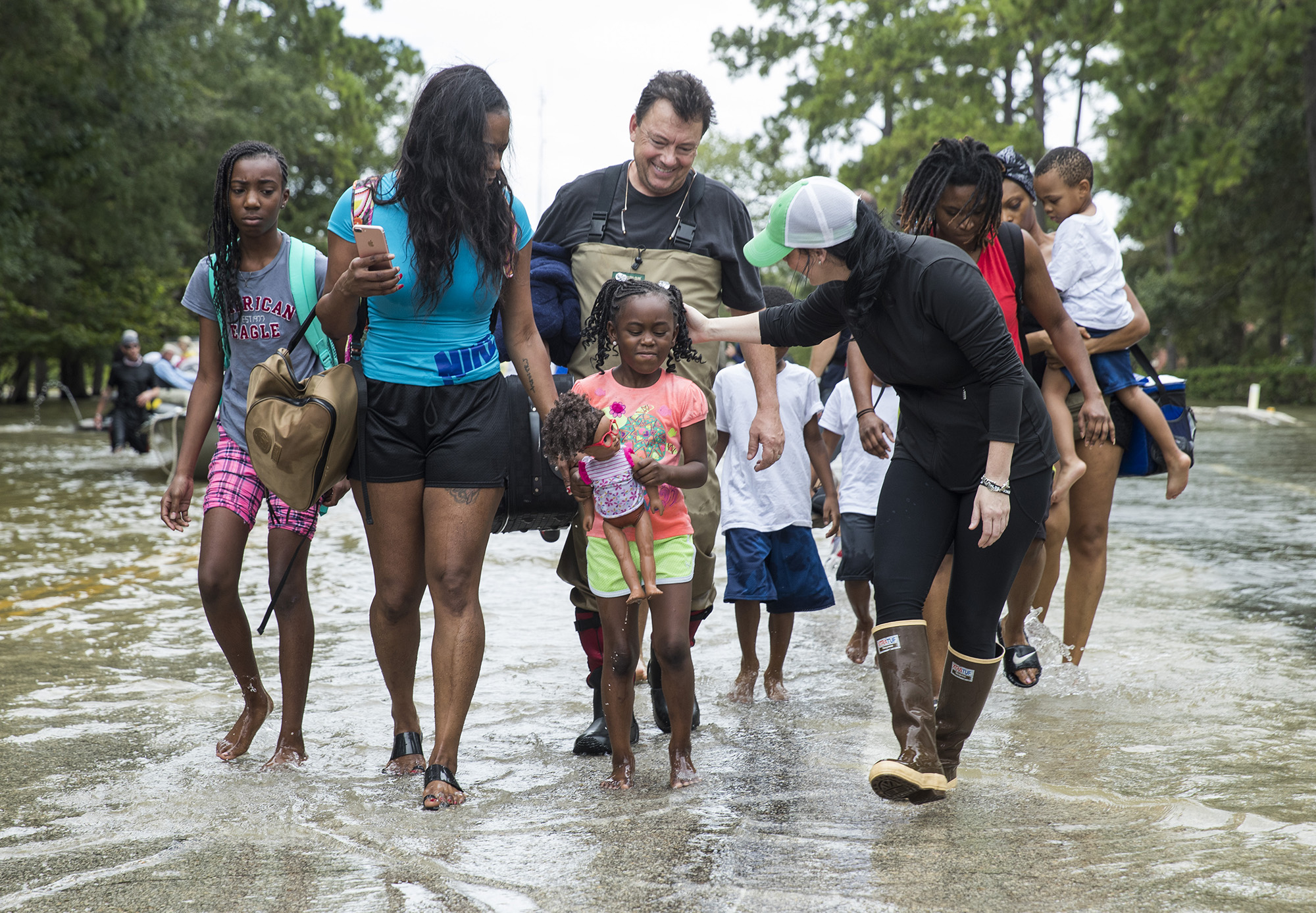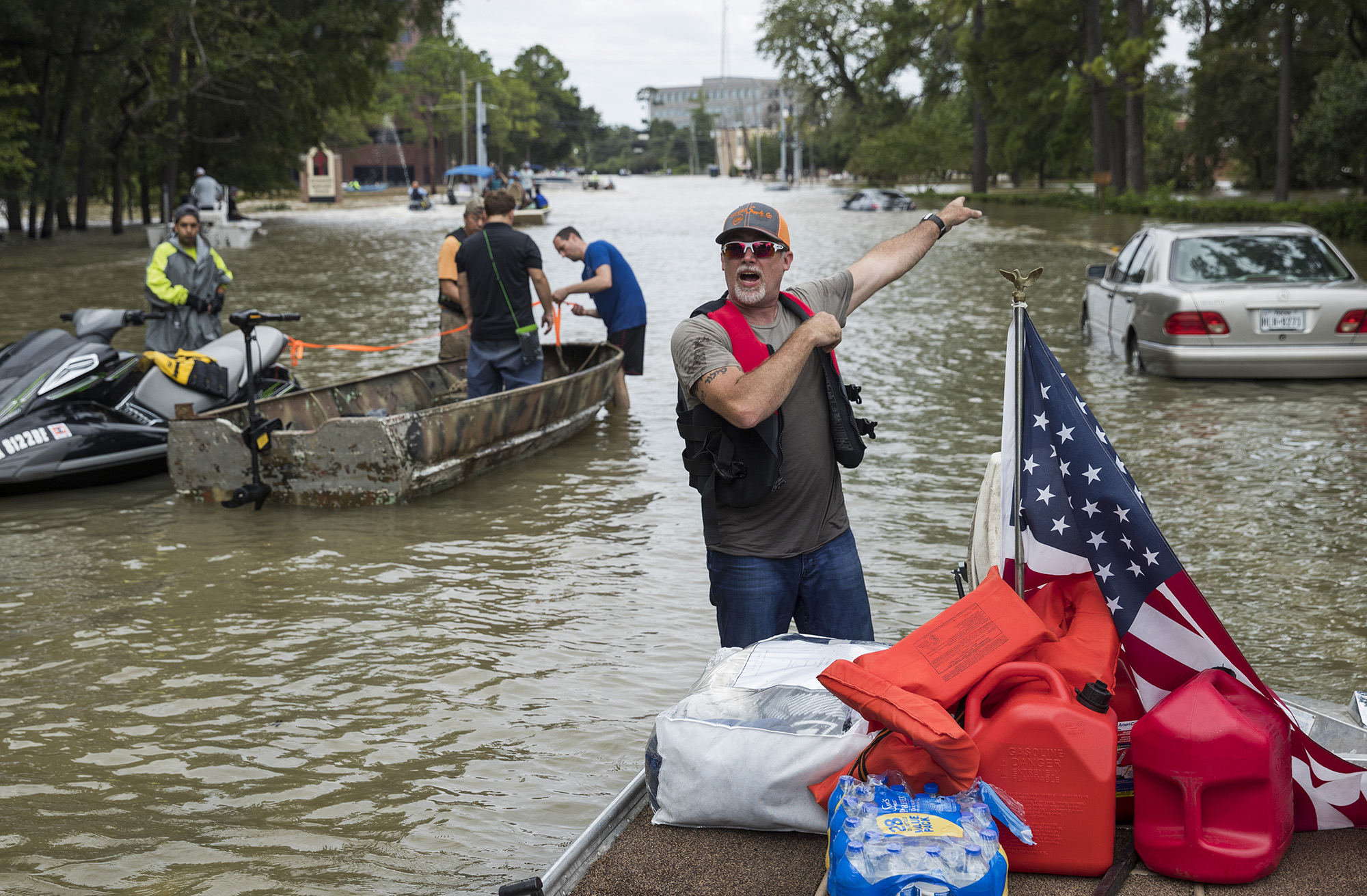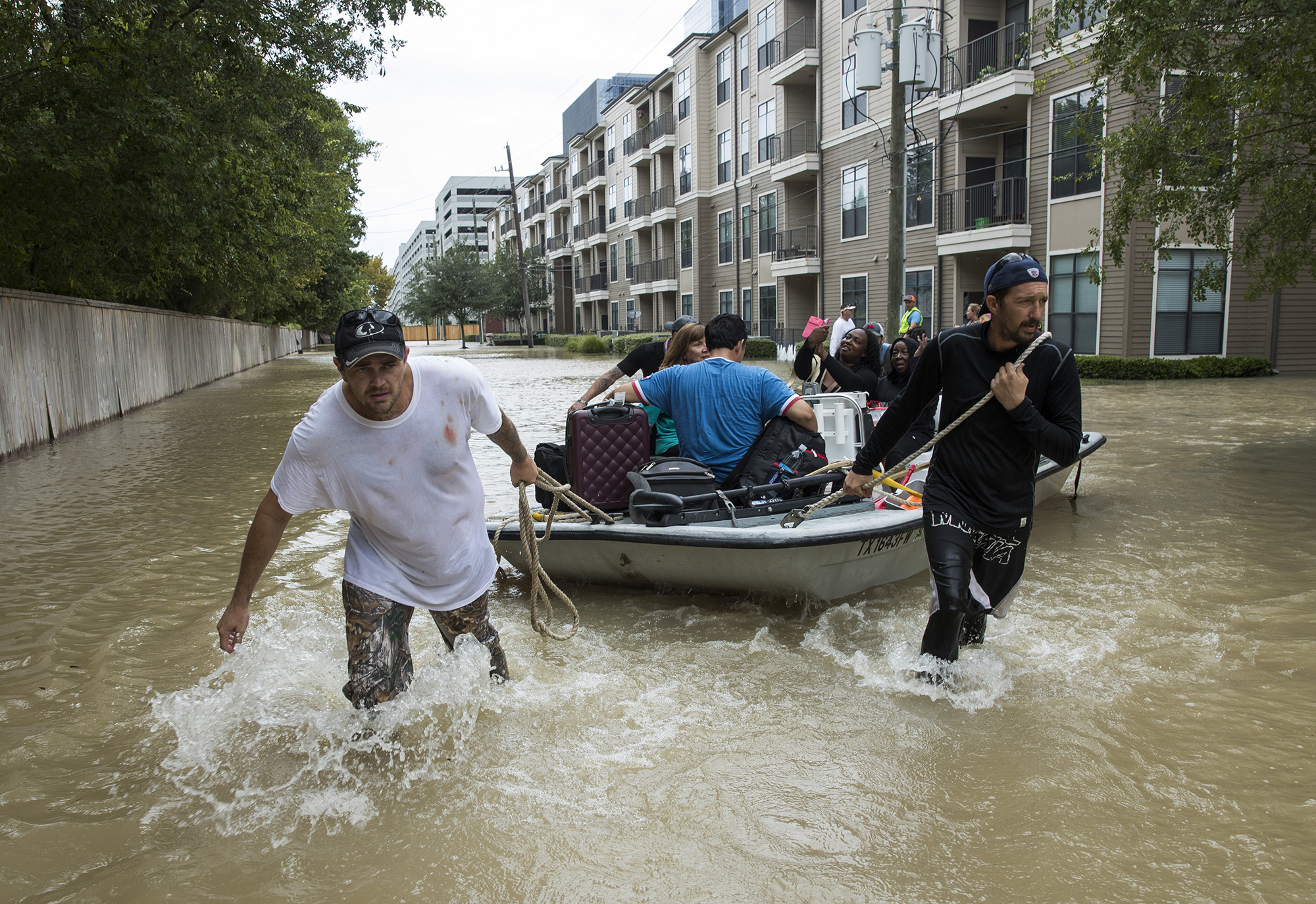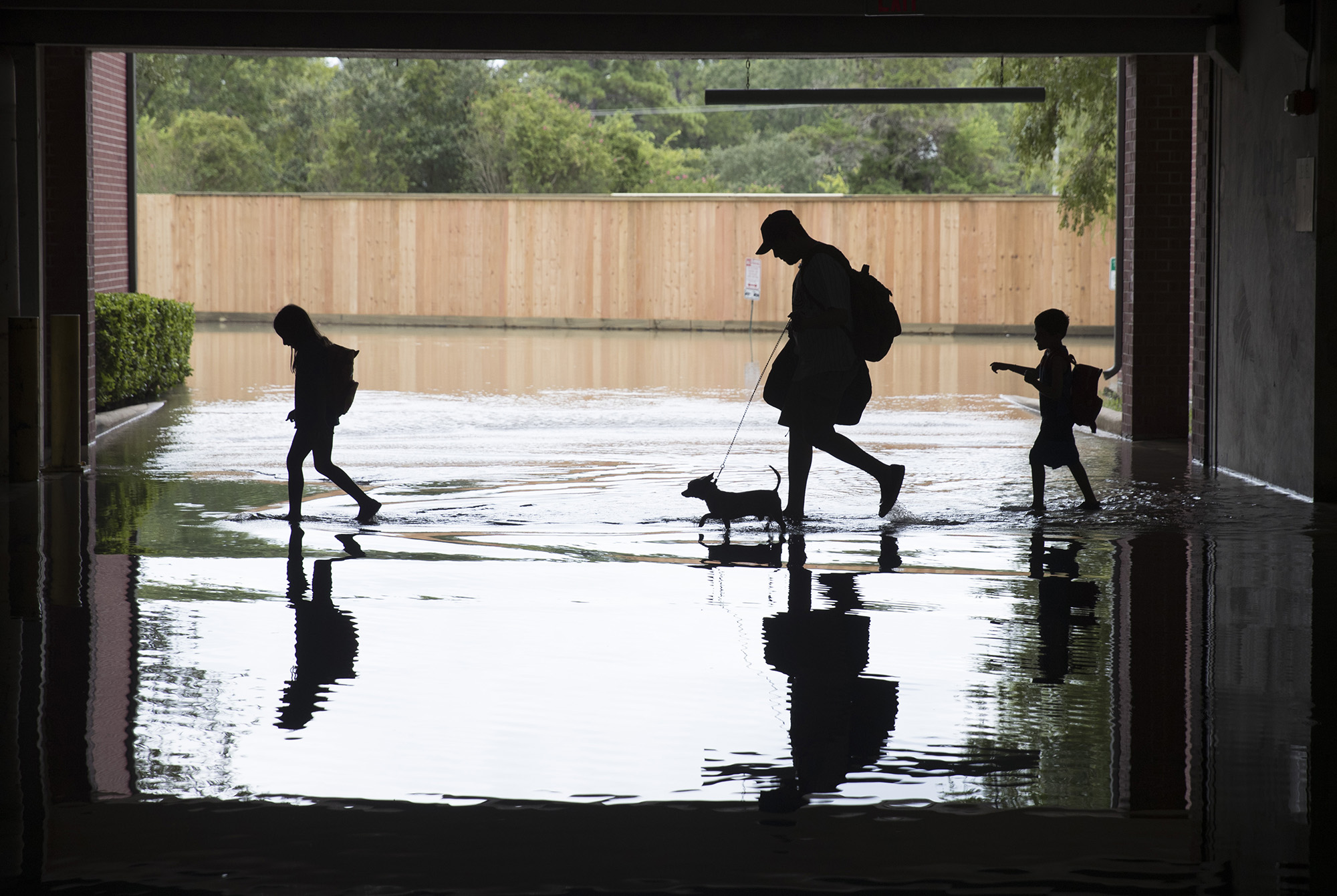ShelterBox brought privacy and comfort to the evacuees through the distribution of its Shelter-in-a-Shelter tents. ShelterBox had positioned tents, school kits, blankets, groundsheets and solar lights near the hurricane-devastated region as it communicated with the Federal Emergency Management Agency and state agencies to determine urgent shelter and aid needs.
ShelterBox deployed aid in Houston and other areas impacted by flooding following Hurricane Harvey.
ShelterBox USA – Harvey Outcomes Report 2018
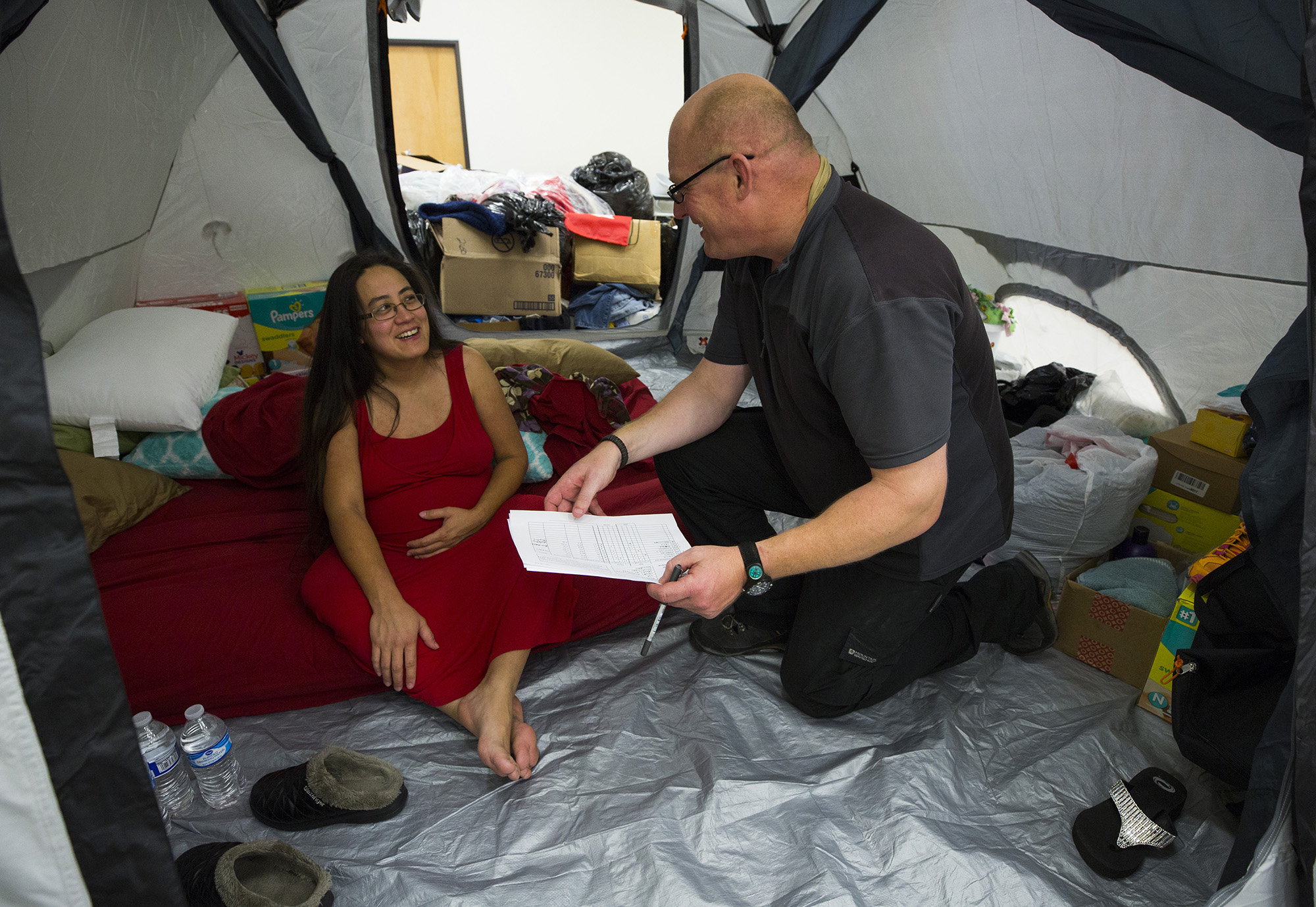
Charity Navigator included ShelterBox USA in its list of charities providing assistance in the wake of Hurricane Harvey.
Read the ShelterBox press release about Harvey.
Read ‘It’s Time To Rethink Emergency Evacuation Centers‘ by John Nosta
Published by Psychology Today on Sept 5, 2017
Hurricane Harvey was a Cat 4 when it first made landfall northeast of Corpus Christi, Texas on Aug. 25th.
Harvey made land fall three separate times, dropping a staggering 20 trillion gallons of water in the Houston area and causing an estimated $100 billion in damage. It is also estimated that nearly 200,000 homes have been destroyed or damaged and while area shelters swelled to 43,000 people.
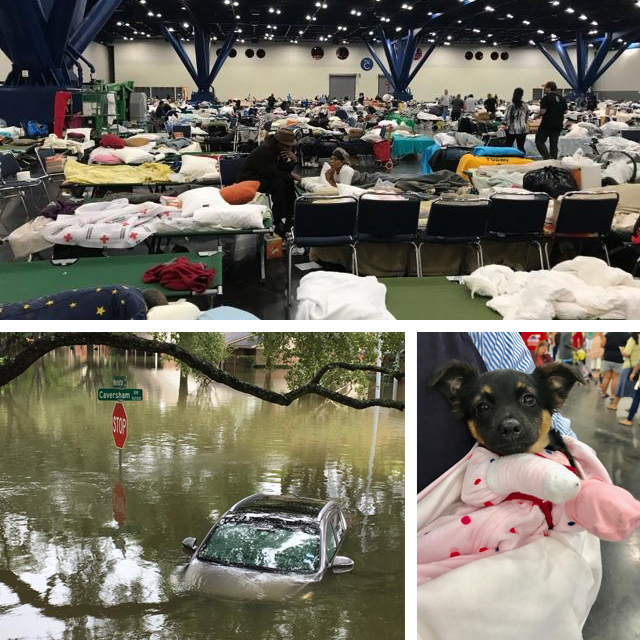
Photos from the Response Team show: the impact of Harvey as area shelters have filled rapidly (top); a flooded Houston street (left) and a recent arrival to a shelter after receiving medical attention (right).
ShelterBox aid deployed in Texas
ShelterBox aid arrived in the form of tents, blankets, groundsheets, school kits, and solar lamps. A provision of tents was being used as privacy tents at area shelters where large numbers of families were being housed, allowing for medical treatment, childcare, and a host of other critical options.
The first ShelterBox Tents were deployed at the George R. Brown Evacuation Center in coordination with the Houston Health Dept as part of our “shelter within a shelter” solution to give doctors, nurses, and individuals privacy for medical screening.
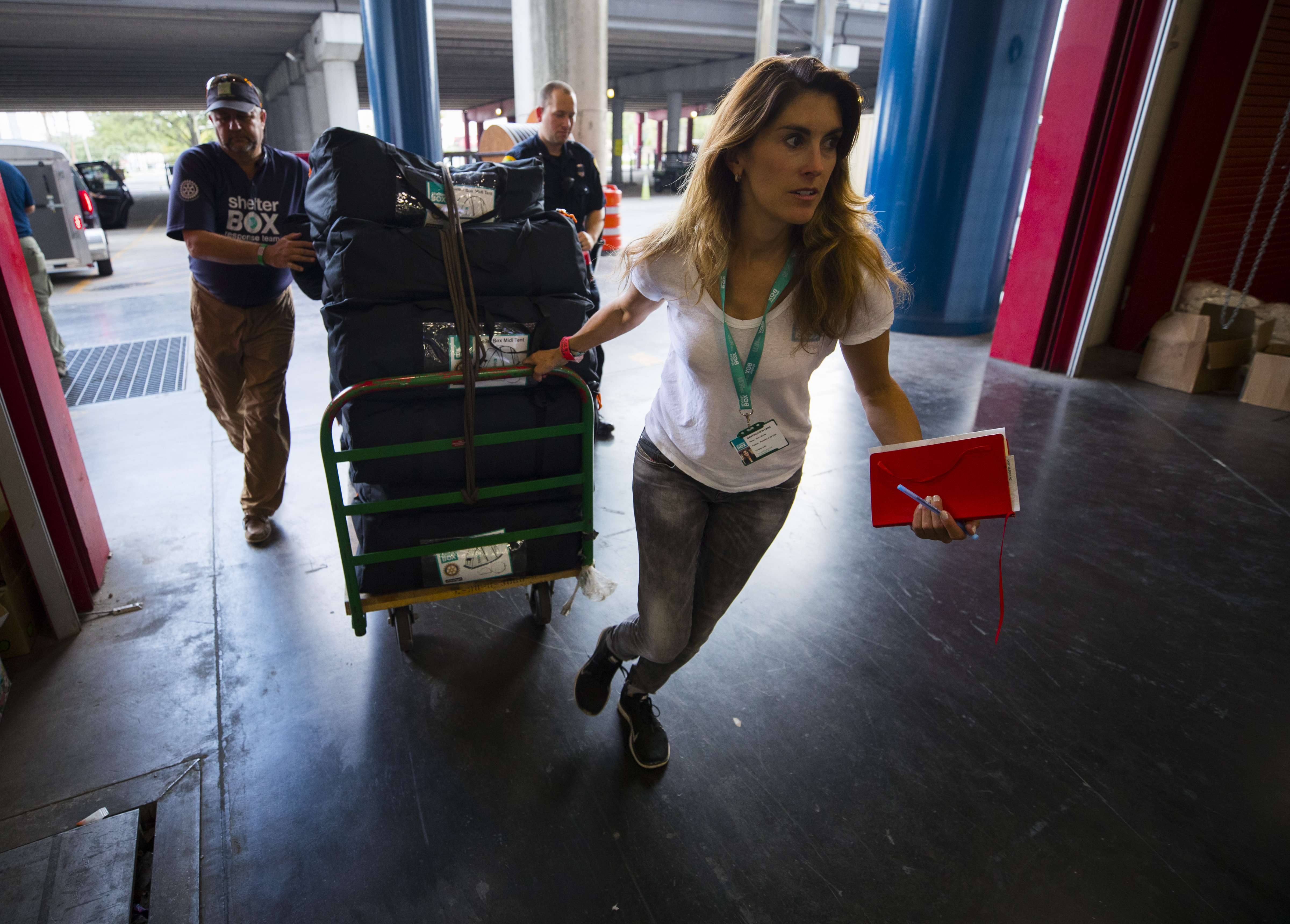
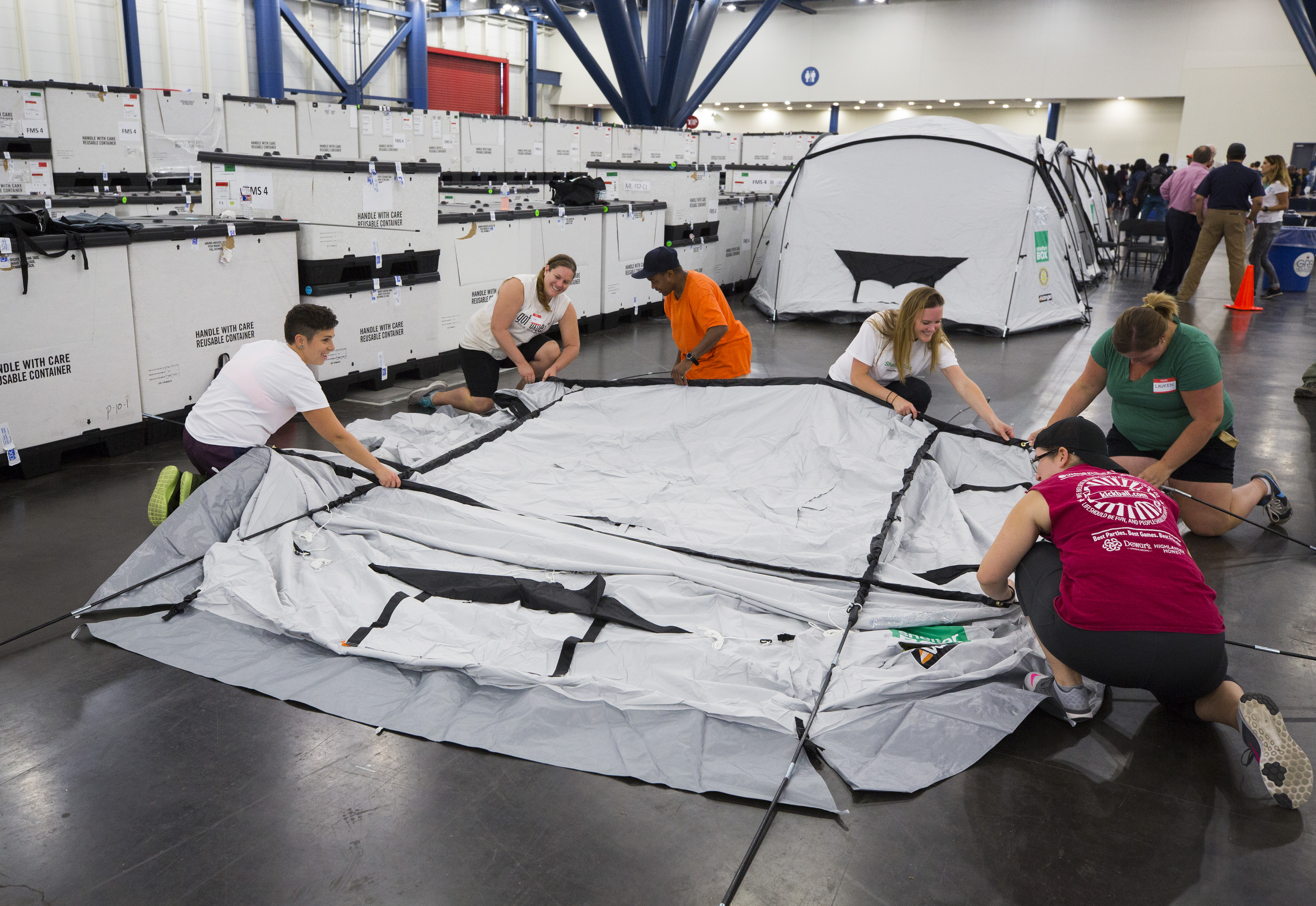
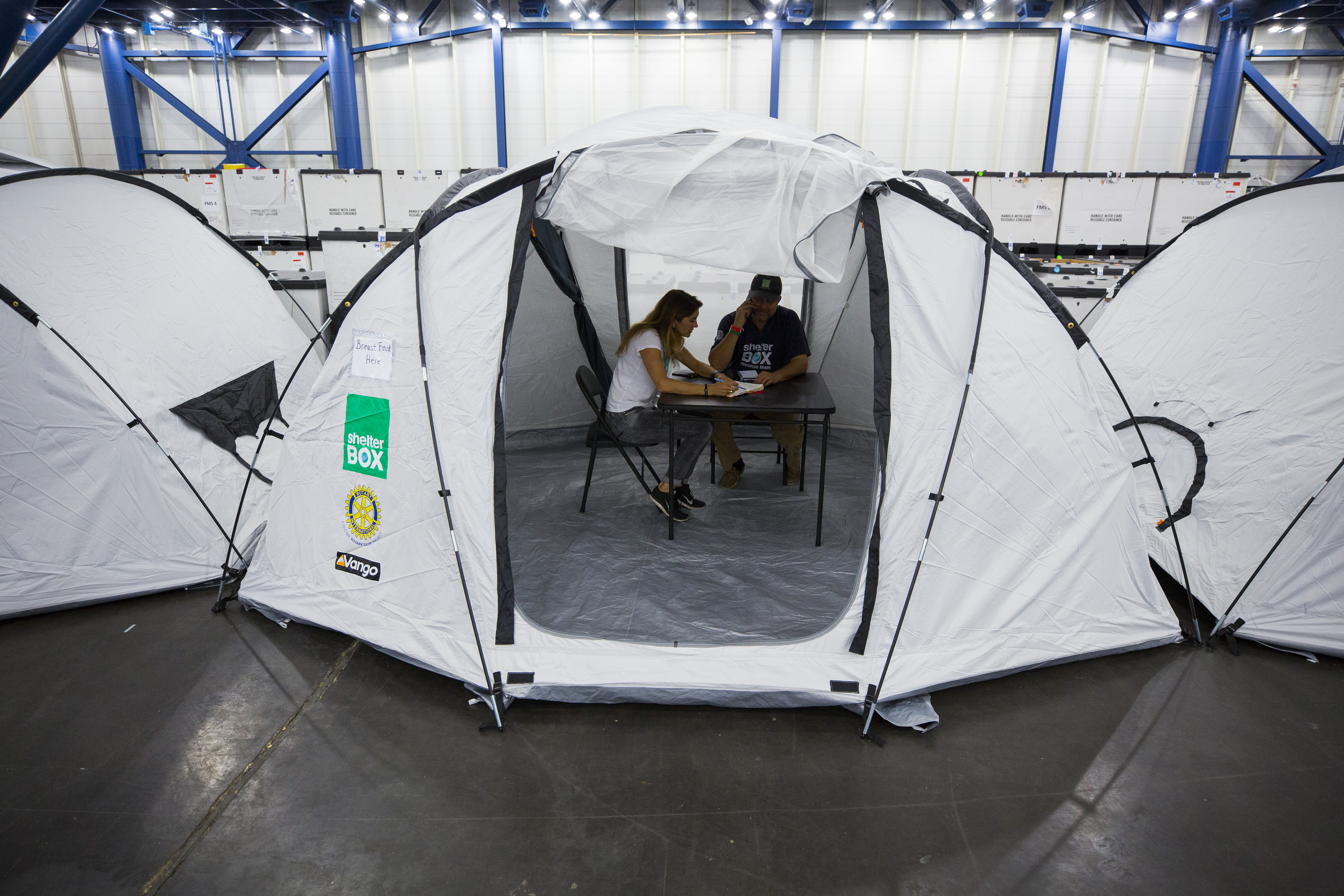
At a shelter in Crosby, Texas, ShelterBox distributed tents for displaced families, half of whose homes washed away in the hurricane. Many of these vulnerable families have young children and are living in a shelter set up at the American Legion Club.
Cindy and Gordon lost their home after water from the San Jacinto River rose and flooded the mobile home park in which they lived. “It’s our new house,” she said sitting inside her new tent. “We just got out with what we could, and we got out before a lot of other people did. We got out when the water started coming up. There are no words to describe it. I mean I can’t believe these people coming to help us like this, it’s so great. I feel like I’m in a big home (the tent). It’s the best home we’ve had yet.”
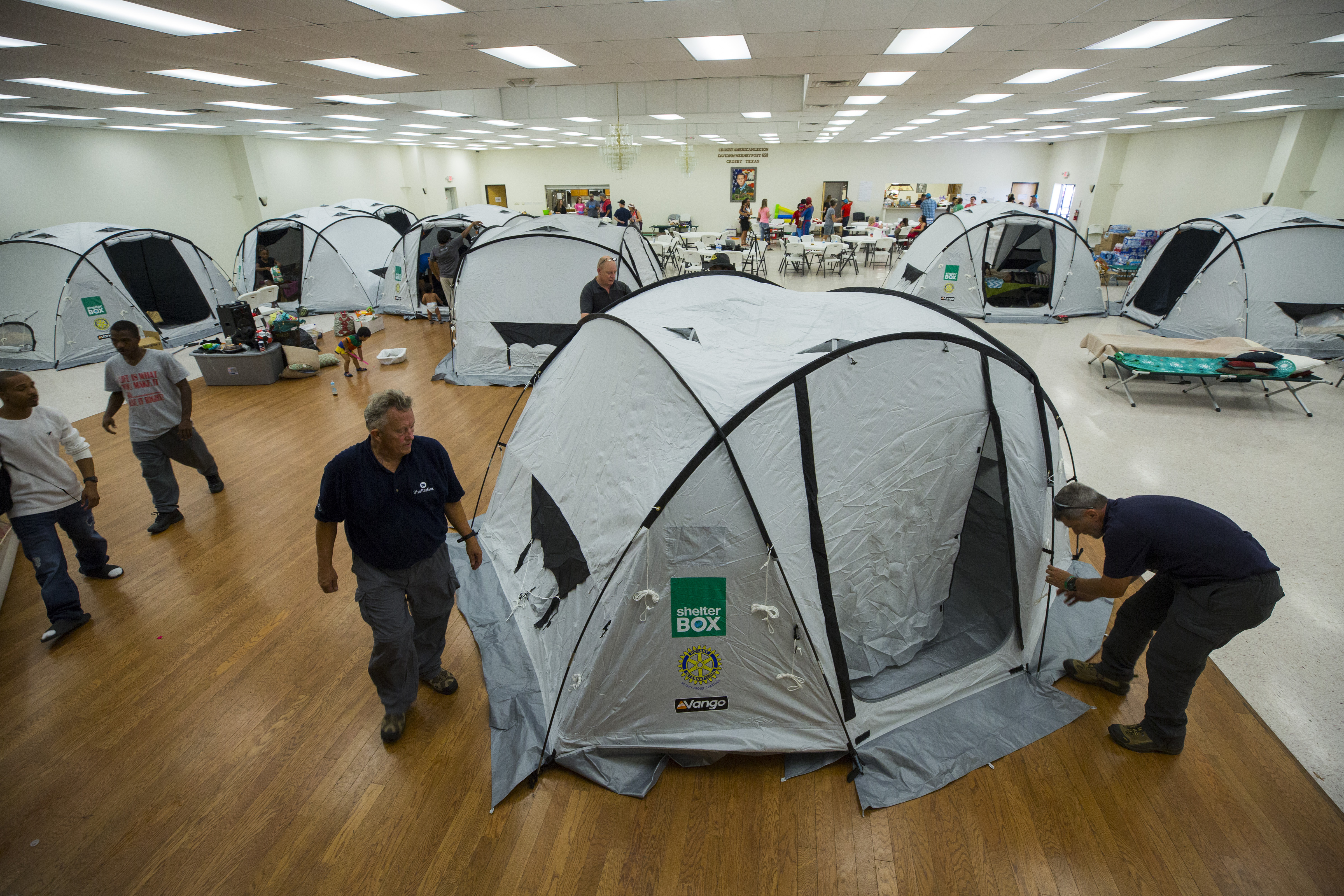
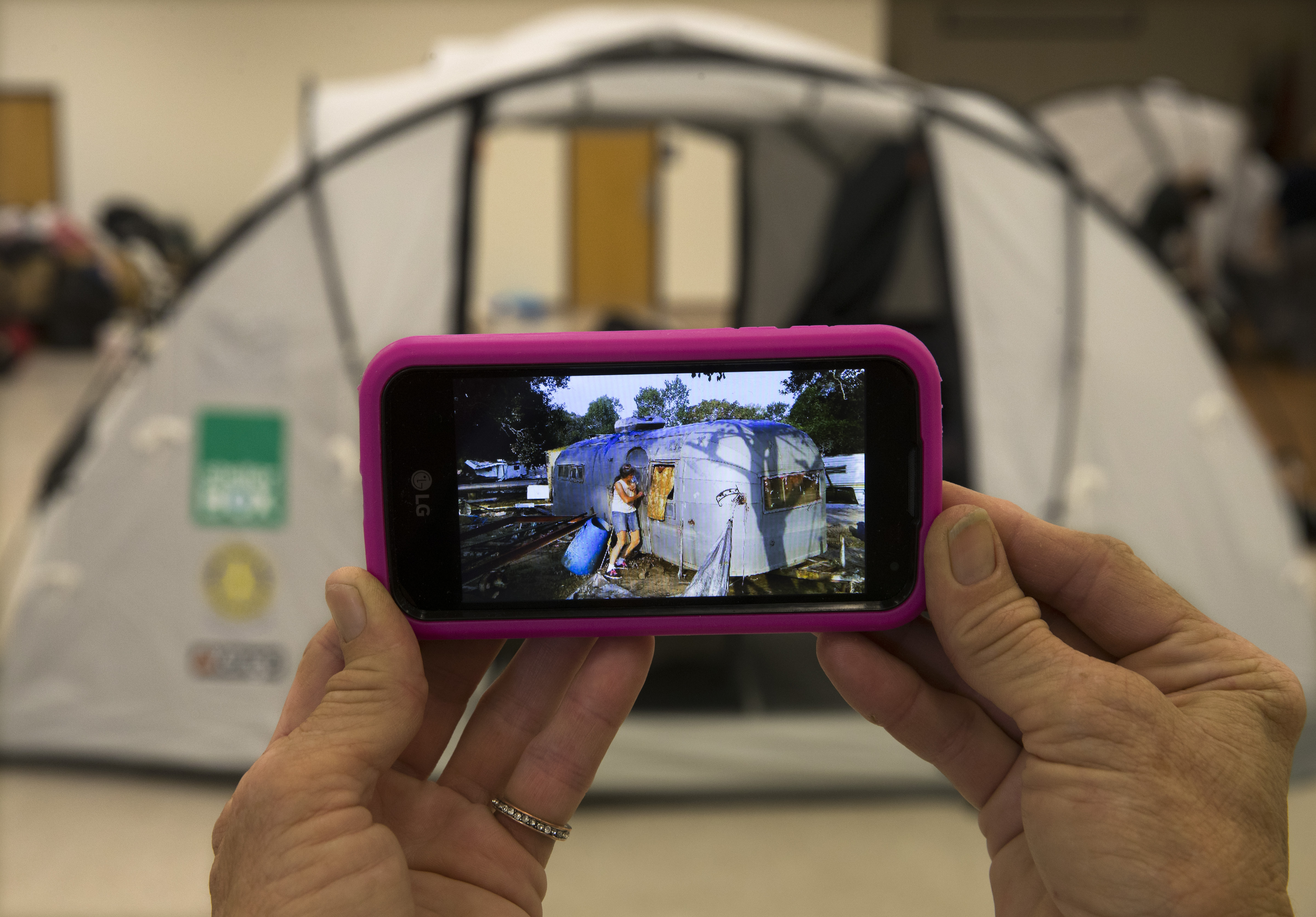
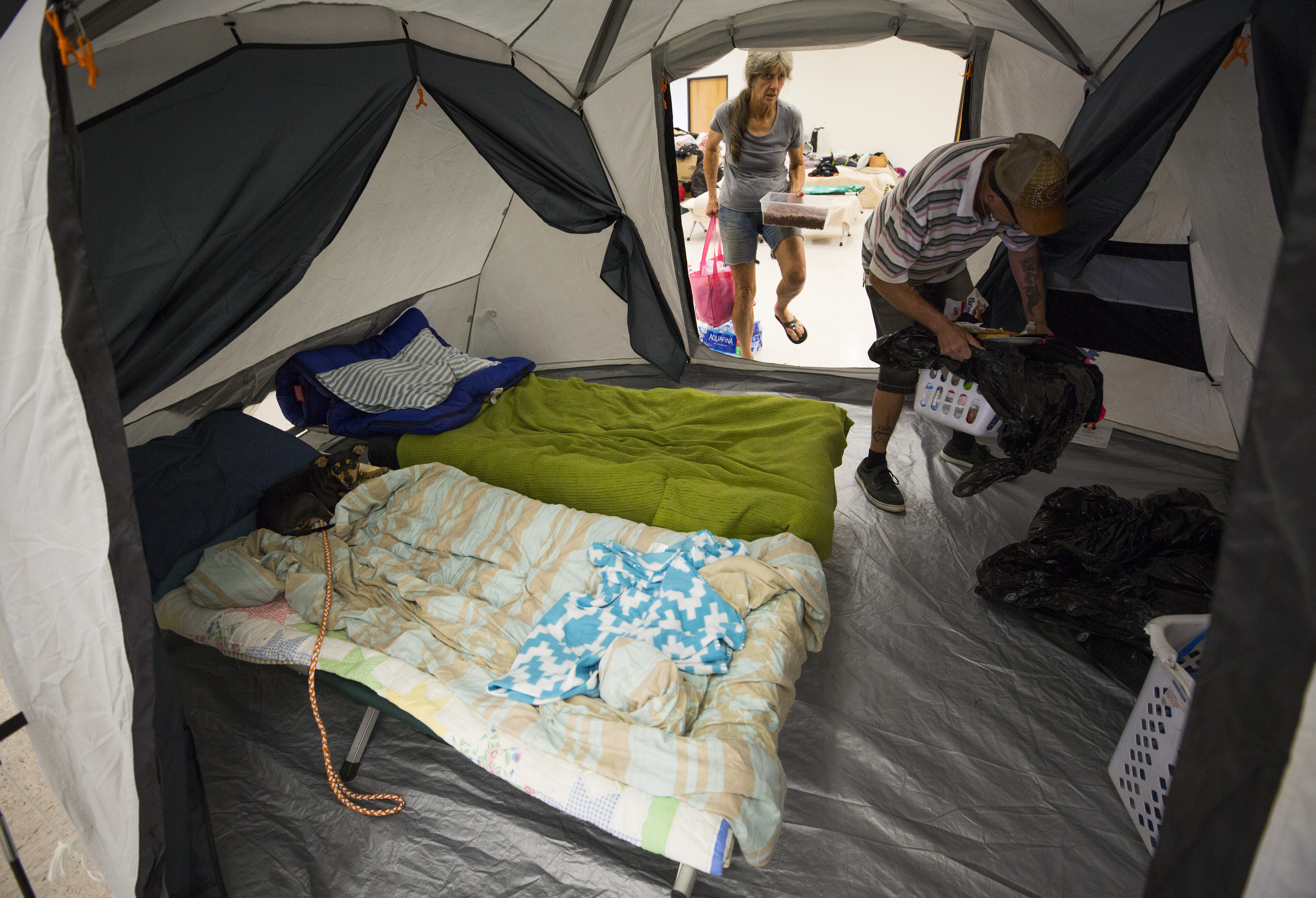
The ShelterBox Response Team initially deployed included to the Harvey reponse: Bruce Heller of Allen, TX, the treasurer of the ShelterBox USA Board of Directors and a Rotary Club member; and Tim Osburn, based in Lakeway, TX, also a Rotarian and former member of the Board of Directors.
Since 2011, Heller has deployed as a Response Team member of disasters in Kenya, Peru, Iraq, Kurdistan, and the Philippines. Osburn has deployed to disaster sites in Ethiopia and Nepal and participated in the domestic deployment following the 2011 tornadoes in Arkansas.
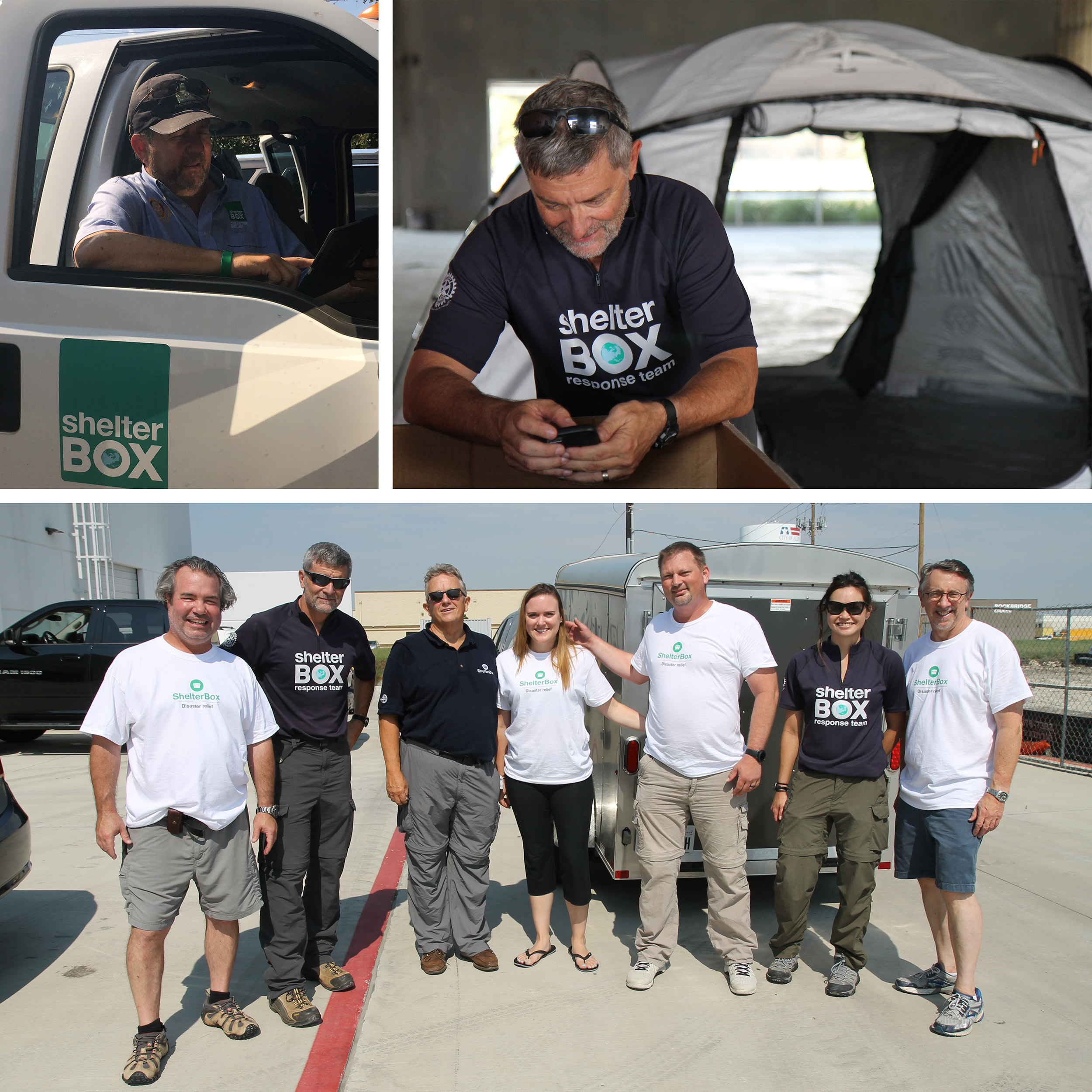
A businessman, Heller said he’s devastated to see so much of Texas underwater. “As a Rotarian and a ShelterBox Response Team Member, I am proud to be able to respond in my home state of Texas, where so may are suffering as a result of this storm. As people of action, the best thing Rotarians can do to help in moments like these is to lend support to trusted partners, like ShelterBox, who are experienced in disaster response and who can make sure aid is being allocated appropriately, where need is greatest.”
Upon being deployed, Osburn said, “Texas is a proud state and as a native Texan it is a humble privilege to serve my fellow Texans and the countless others in 9 other countries that Shelterbox is currently conducting relief operations.”
Additional support in Texas included: Response Team member Candice Streff; Three Board Members: Marlise Skinner, Louis Turpin and Don Utz; and Director of Fundraising Sarah Robinson. Several ShelterBox Ambassadors also volunteered their assistance to the response.
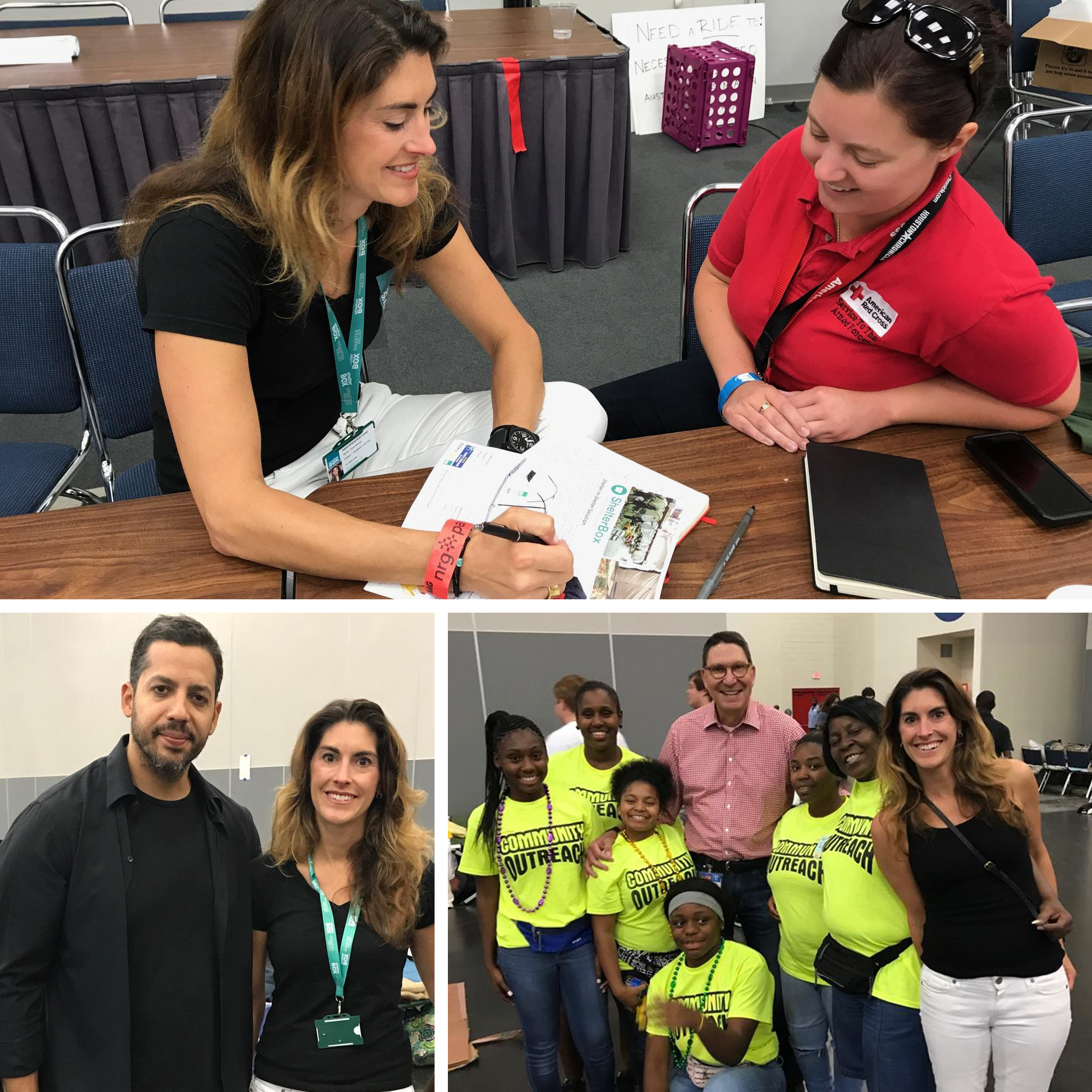
ShelterBox USA President Kerri Murray was on the ground in Texas to coordinate with the Response Team as well as local agencies. Pictured above: Kerri coordinates shelter options with a Red Cross representative; Magician David Blaine with Murray at one of the area shelters; H-E-B President Scott McClelland with Murray and a local community outreach team.
It’s hard enough to lose your home and be traumatized by the massive devastation of a disaster. In these times, critical community services and support can be disrupted. We are providing the privacy tents to enable services to continue and a sense of normalcy to return.
“Women who are nursing still need places to breastfeed. People need places to receive counseling and attend AA and substance support meetings. People need places to worship. In coordination with the Red Cross and Department of Public Health in Houston, ShelterBox USA set up Shelter-in-a-Shelter solutions that now serve as private spaces for HIV/STD consultation, lactation stations, places of worship, and more.”
~ ShelterBox USA President, Kerri Murray
Public Support
❤️ Help @shelterboxusa provide shelter and supplies to the victims of #harvey. Go to https://t.co/YAfQDG4KOq and donate. #texasstrong
— Gigi Hadid (@GiGiHadid) August 29, 2017
❤️My prayers continue to go out to the innocent victims in #texas. Help @shelterboxusa provide relief: https://t.co/5ZVi1bCMQp #harvey
— YOLANDA (@YolandaHFoster) August 29, 2017
Help @shelterboxusa provide aid to the survivors of #harvey. Go to https://t.co/0FIKbZAEmi and donate. #texasstrong
— Frances Fisher (@Frances_Fisher) August 30, 2017
Help @shelterboxusa provide aid to the survivors of #harvey. Go to https://t.co/6wBlTpkQZ2 and donate. #texasstrong??
— Aisha Hinds (@AishaHinds) August 30, 2017
Please help @shelterboxusa continue to provide life-saving shelter! #HoustonFlood #TexasFlood
— JOHN NOSTA (@JohnNosta) August 30, 2017
My prayers go out to the 30,000 who need aid in #Texas. Please help @shelterboxusa provide relief: https://t.co/VGDnGbUyms #harvey pic.twitter.com/LVLYH463vV
— Chadwick Boseman (@chadwickboseman) August 30, 2017
Guys. Please Help @shelterboxusa provide aid to the survivors of #harvey. Go to https://t.co/AiYkCmWPKK and donate. #texasstrong pic.twitter.com/EzLd4NeUvM
— Dylan Sprayberry (@DSprayberry) August 30, 2017
You guys are rockstars.
— Daphne Unfeasible (@DaphneUn) August 30, 2017
Go to https://t.co/hP3ejceV0l and help @shelterboxusa contribute to the immediate assistance of those suffering from #harvey #texasstrong
— Shay Mitchell (@shaymitch) August 31, 2017
My thoughts and prayers goes out to #Texas. Help @shelterboxusa provide aid to the survivors@ https://t.co/QCgda3KTYu & donate❤️#texasstrong
— Ajiona Alexus (@AjionaAlexus) September 1, 2017
Bad Timing
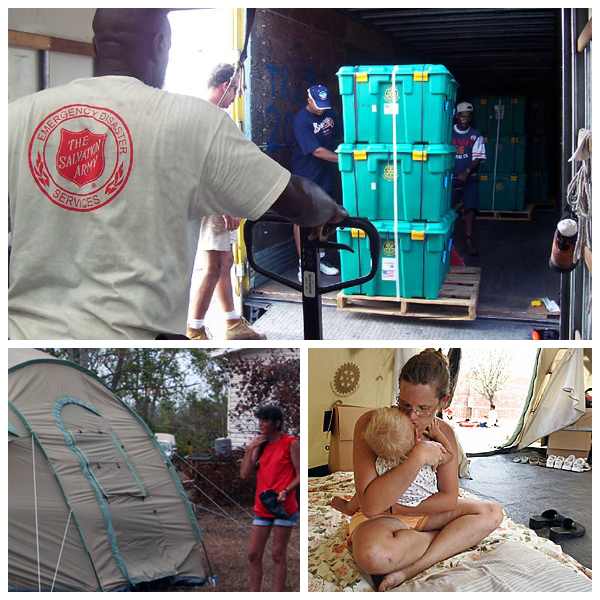
August 29th marks the anniversary of Hurricane Katrina in 2005.
The storm devastated communities all along the coasts of Alabama, Louisiana and Mississippi with hurricane-force winds and a storm surge that sent walls of water several miles inland. It was estimated that 80% of New Orleans was completely flooded.
Aid from ShelterBox was the first help to reach many survivors of the disaster. Response Team volunteers worked with local Rotarians, government officials and partner agencies to distribute tents to thousands of people who had seen their homes and possessions destroyed.
Staying Prepared
As the Response Team works to deliver the best shelter solutions in Texas, our worldwide operations continue.
ShelterBox is currently also providing emergency shelter to families who have lost their homes in Syria, Iraq, Jordan, Cameroon, Niger, Colombia, and Somaliland. Response Teams are conducting assessments in Sierra Leone following heavy rain and mudslides, and in Nepal, as extreme flooding throughout South Asia is claiming lives and displacing families (NY Times 8.29.17).
The organization responded to the last tropical storm to threaten the U.S. in 2016 as Hurricane Matthew cut through Haiti, Cuba, and on to the Eastern seaboard of the U.S.
